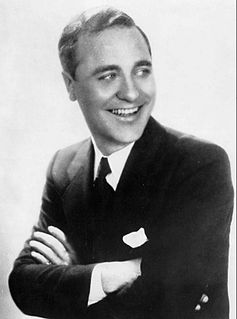CKVR-DT, virtual channel 3, is the flagship station of the CTV 2 television system licensed to Barrie, Ontario, Canada and serving the Toronto television market. The station is owned by Bell Media, as part of a twinstick with Toronto-based CTV flagship station CFTO-DT and is also sister to 24-hour regional news channel CP24.

TVOntario is a Canadian publicly funded English language educational television station and media organization serving the Canadian province of Ontario. It is operated by the Ontario Educational Communications Authority, a Crown corporation owned by the Government of Ontario. It operates two television stations: CICA-DT in Toronto and CICO-DT-24 in Ottawa. These two stations relay their programming across portions of Ontario through seven rebroadcast stations. It is available on pay television providers throughout Ontario, all providers in the province are required to carry it on their basic tier, and programming can be streamed online.
CTV Northern Ontario, formerly known as MCTV, is a system of four television stations in Northern Ontario, Canada, owned and operated by the CTV Television Network, a division of Bell Media.

CKXT-DT was a broadcast television station based in Toronto, Ontario, Canada that broadcast to much of southern and eastern Ontario. It was owned by Quebecor Media through its Groupe TVA unit. At the time of the station's closure on November 1, 2011, the station was serving as an over-the-air simulcast of Quebecor's cable news channel, Sun News Network. The station transmitted on channel 52 in Toronto.

CHCH-DT, virtual channel 11, is an independent television station licensed to Hamilton, Ontario, Canada. The station is owned by Channel Zero. CHCH's studios are located near the corner of Jackson and Caroline Streets in downtown Hamilton, with additional offices at the Marriott on the Falls in Niagara Falls, Ontario. Its transmitter is located at 481 First Road West in Stoney Creek.

CBLT-DT, virtual channel 5, is the flagship station of the English language service of CBC Television located in Toronto, Ontario, Canada. The station is owned by the Canadian Broadcasting Corporation, as part of a twinstick with Ici Radio-Canada Télé owned-and-operated station CBLFT-DT, which is operated through corporate subsidiary Société Radio-Canada.
CICI-TV is the CTV owned-and-operated television station in Sudbury, Ontario, Canada. It broadcasts an analogue signal on VHF channel 5 from a transmitter near Huron Street in Sudbury.
CKNY-TV is the CTV owned-and-operated television station in North Bay, Ontario, Canada. It broadcasts an analogue signal on VHF channel 10 from a transmitter adjacent to Ski Hill Road in Nipissing.

CIII-DT, virtual and UHF digital channel 41, is the flagship station of the Global Television Network located in Toronto, Ontario, Canada. The station is owned by Corus Entertainment. CIII maintains studio facilities located at 81 Barber Greene Road in the Don Mills district of Toronto, and its transmitter is located atop the CN Tower in downtown Toronto. The station serves much of the population of Ontario through a network of 13 transmitters across primarily the southern and central portions of the province. On cable, CIII is available on Rogers Cable channels 3 and 116 and in high definition on digital channel 517; on satellite, the station is also available on Shaw Direct classic lineup channel 331 and advanced lineup channel 39, and on Bell TV on channels 211 and 1052.

CISA-DT, VHF channel 7, is a Global owned-and-operated television station located in Lethbridge, Alberta, Canada. The station is owned by Corus Entertainment. CISA's studios are located on 28 Street and 14 Avenue North on the northeastern side of Lethbridge, and its transmitter is located near Highway 25 and Range Road 221, just outside the city. This station can also be seen on Shaw Cable channel 5 and in high definition on digital channel 211.

Western International Communications Ltd. was a Canadian media company that operated from 1982 to 2000, with operations including broadcast and specialty television, radio, and satellite distribution via a majority interest in Canadian Satellite Communications.
Television in Canada officially began with the sign-on of the nation's first television stations in Montreal and Toronto in 1952. As with most media in Canada, the television industry, and the television programming available in that country, are strongly influenced by media in the United States, perhaps to an extent not seen in any other major industrialized nation. As a result, the government institutes quotas for "Canadian content". Nonetheless, new content is often aimed at a broader North American audience, although the similarities may be less pronounced in the predominantly French-language province of Quebec.

CJDC-TV is a CTV 2 owned-and-operated television station in Dawson Creek, British Columbia, Canada. It broadcasts an analogue signal on VHF channel 5 from a transmitter near 233 Road in Peace River.
CHML is a radio station, broadcasting at 900 AM in Hamilton, Ontario, Canada. CHML's transmitter power is 50,000 watts using an eight-tower directional antenna array with a signal oriented largely west-northwest to east-southeast, covering the Niagara Peninsula and Western New York, USA strongest; the array is located between Peters Corners and Cambridge. Its studios are located on West Main Street in Hamilton. The station airs a news/talk format branded as Global News Radio 900 CHML. CHML is owned by Corus Entertainment.

CFTK-TV is a CTV 2 owned-and-operated television station in Terrace, British Columbia, Canada. It broadcasts an analogue signal on VHF channel 3 from a transmitter on Thornhill Mountain near Terrace and also rebroadcasts in Prince Rupert on VHF channel 6.
Digital terrestrial television in Canada is transmitted using the ATSC standard. Because Canada and the U.S. use the same standard and frequencies for channels, people near the Canada–United States border can watch digital television programming from television stations in either country where available. The ATSC standards are also used in Mexico, the Dominican Republic, Suriname and South Korea.
Northern Access Network was a Canadian unlicensed television system which broadcast videotaped programming to remote Canadian communities in the late 1970s. Although shortlived and often in conflict with the Canadian Radio-television and Telecommunications Commission over its lack of a broadcast license, the service did have the effect of forcing Canada's major television networks to add rebroadcast transmitters in a number of communities they had previously ignored.
Jane Gray (1896-1984) was a pioneering Canadian radio and television broadcaster, who was active between 1924 and 1978. She was one of the first women to pursue a career in radio broadcasting in Canada, and was inducted into the Canadian Association of Broadcasters Hall of Fame in 1988.
Kenneth David Soble was a Canadian broadcasting executive, who became the owner of radio station CHML and was one of the founders of CHCH-TV, both of which were in Hamilton, Ontario. Under his management, CHCH withdrew from the CBC Television Network in 1961 to become Canada's first independent television station. He was also the original applicant for what would eventually become Canada's Global Television Network, although the application underwent numerous changes before being transferred to a separate company, unrelated to Soble's Niagara Television, in 1970. One indication of the esteem in which he was held was that the Canadian Broadcasting Corporation offered him the job of president of the network in late 1966; but he decided to turn it down.
















